
Baron Berners is a barony created by writ in the Peerage of England.

Earl of Chichester is a title that has been created three times, twice in the Peerage of England and once in the Peerage of the United Kingdom. The current title was created in the Peerage of the United Kingdom in 1801 for Thomas Pelham, 2nd Baron Pelham of Stanmer.
Earl of Bradford is a title that has been created twice, once in the Peerage of England and once in the Peerage of the United Kingdom. It was first created in 1694 for Francis Newport, 2nd Baron Newport. However, all the Newport titles became extinct on the death of the fourth Earl in 1762. The earldom was revived in 1815 for Orlando Bridgeman, 2nd Baron Bradford. The Bridgeman family had previously succeeded to the Newport estates. The title of the peerage refers to the ancient hundred of Bradford in Shropshire, and not, as might be assumed, to the city of Bradford, Yorkshire, or the town of Bradford-on-Avon in Wiltshire.
Baron Ravensworth, of Ravensworth Castle in the County Palatine of Durham and of Eslington Park in the County of Northumberland, is a title in the Peerage of the United Kingdom.
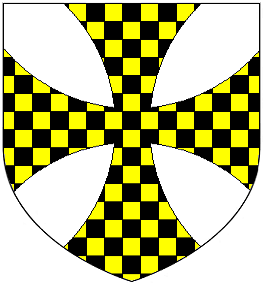
Baron Wenlock is a title that has been created three times, once in the Peerage of England and twice in the Peerage of the United Kingdom. The first creation came in 1461 when the soldier Sir John Wenlock was summoned to Parliament as Lord Wenlock. However, he was childless and on his death in 1471 the title became extinct.
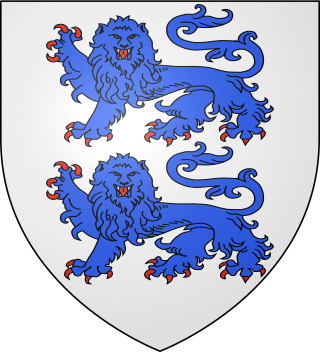
There have been two baronetcies created for members of the Hanmer family of Flintshire, Wales, one in the Baronetage of England and one in the Baronetage of Great Britain. Only one creation is extant as of 2008. The third Baronet of the second creation was elevated to the peerage as Baron Hanmer in 1872, a title which became extinct in 1881. The family name derived from the manor of Hanmer in the Diocese of St. Asaph.
There have been three baronetcies created for persons with the surname Bellingham, one in the Baronetage of England, one in the Baronetage of Ireland and one in the Baronetage of Great Britain. As of 2014 one creation is extant.
There have been two baronetcies created for persons with the surname Williamson, one in the Baronetage of England and one in the Baronetage of the United Kingdom.
There have been seven baronetcies created for persons with the surname Edwards, three in the Baronetage of England and four in the Baronetage of the United Kingdom. Only one creation is extant as of 2007.
There have been two baronetcies created for persons with the surname Wakeman, one in the Baronetage of England and one in the Baronetage of the United Kingdom.
There have been four baronetcies created for persons with the surname Musgrave, one in the Baronetage of England, one in the Baronetage of Nova Scotia, one in the Baronetage of Ireland and one in the Baronetage of the United Kingdom. As of 2014 two of the creations are extant.

The Wake Baronetcy, of Clevedon in the County of Somerset, is a title in the Baronetage of England. It was created on 5 December 1621 for Baldwin Wake. The sixth Baronet assumed the additional surname of Jones but died childless. The eighth Baronet sat as Member of Parliament for Bedford. The twelfth Baronet was High Sheriff of Northamptonshire in 1879. The thirteenth Baronet was a Major-General in the British Army. Another member of the family to gain distinction was Charles Wake, second son of the tenth Baronet; he was an Admiral in the Royal Navy.
This is a list of sheriffs and high sheriffs of Shropshire

Sir Baldwin Leighton, 7th Baronet was an English landowner and politician, who sat in the House of Commons from 1859 to 1865.
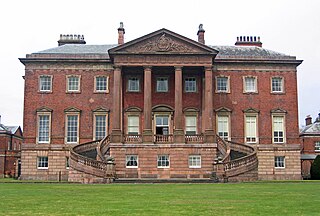
There have been two baronetcies created for persons with the surname Leicester, both in the Baronetage of England. The fifth Baronet of the second creation was raised to the peerage as Baron de Tabley in 1826. Both the barony and the two baronetcies are now extinct.

Sir Baldwyn Leighton, 8th Baronet was an English Conservative Party politician who sat in the House of Commons from 1877 to 1885.
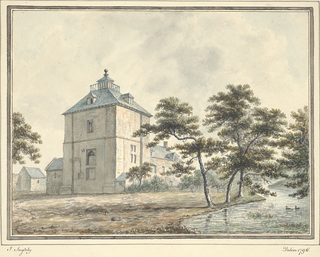
Wattlesborough Tower is a ruined fortified 13th-century manor house or Tower House in Shropshire. It is situated close to the boundary with Powys in Wales. Wattlesborough is a former township within the present parish of Alberbury. The castle is a Grade 1 listed scheduled monument. The Tower comprises a square two-storey tower above an undercroft surrounded by a moated enclosure with a fishpond. The Leighton family inherited Wattlesborough in 1471 and used it as their chief residence until circa 1711. At that time an adjoining farm building was constructed and named Wattlesborough Hall.

Sir Charlton Leighton, 4th Baronet (c.1747–1784) was a British politician who sat in the House of Commons between 1774 and 1784.
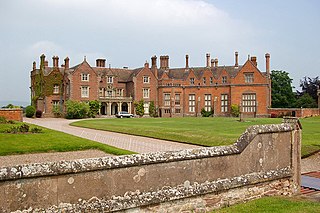
General Sir Baldwin Leighton, 6th Baronet was a senior English officer in the British Army.
Sir Edward Leighton, 1st Baronet (c.1650–1711), of Wattlesborough Castle, Shropshire, was a Whig politician who sat in the English and British House of Commons between 1698 and 1710.












